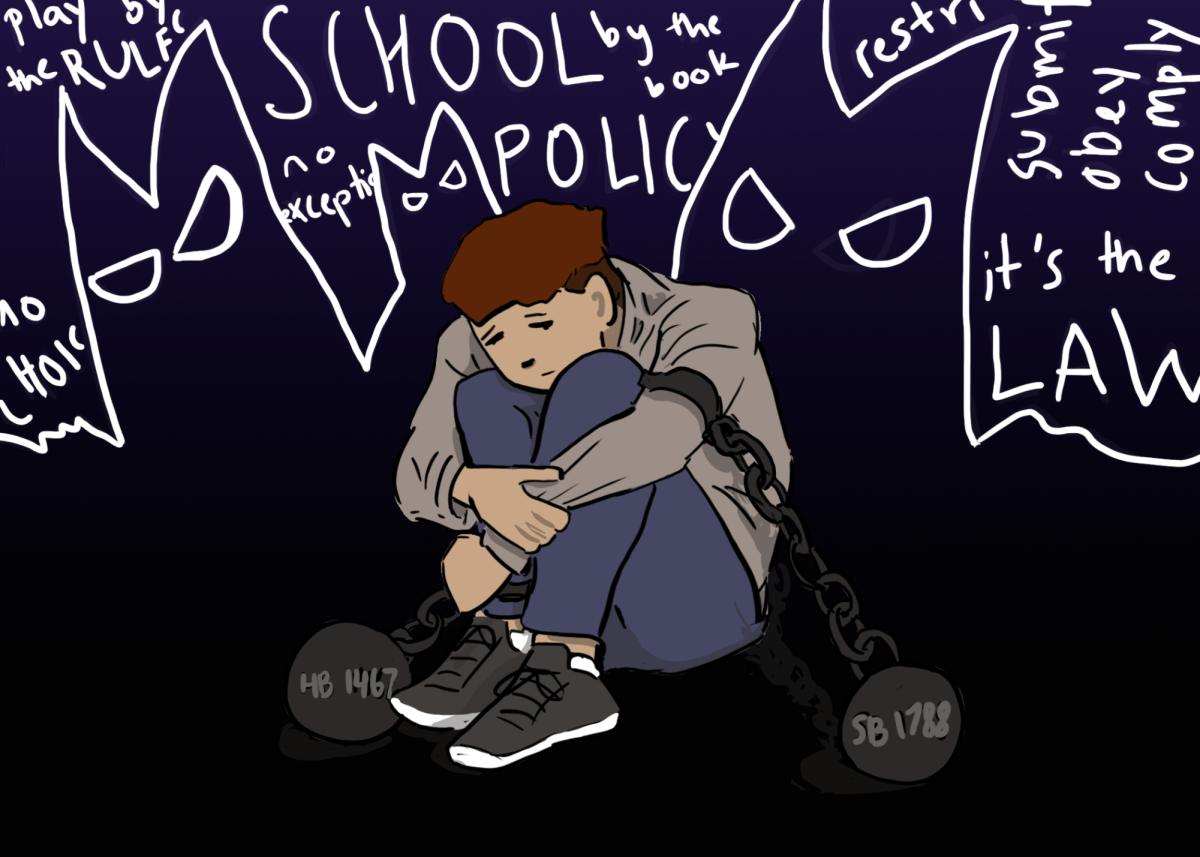A scanning system for bus IDs, standardized tests online and an improved wifi network: Technology is deeply integrated into everything we do at Hagerty. Every day, we use high-tech systems to do everything from submitting assignments to taking digital field trips.
Most of these advances are not only helpful, but necessary to prepare us for college and the real world (or workforce). At school, students have access to computers, whether that be in labs or computer carts, to use to complete in-class assignments, as digital assignments like discussion posts can ensure that students are engaged throughout a lesson. Most often, the wifi speed is relatively fast, allowing for all 2,580 students to use the same network during the school day. This is a massive upgrade from what was the norm just a few years ago, and if you looked at other schools across the state and nation, it would be even clearer that we have a huge advantage.
Technology allows students to be exposed to a greater amount of information. Using a phone or computer as a part of an educational lesson can allow students to explore topics beyond what is covered in traditional textbooks, increasing curiosity about certain subjects, and fostering a love of learning.
While the benefits of technology are hard to overlook, it is not the solution to every problem.
Too many digital aspects of the classroom can increase the room for error and become more difficult to manage. Think about it: if someone buys an electric car with all kinds of gadgets, it increases the amount of potential issues. The same is true in the classroom, as network issues or computer malfunctions are common hurdles.
Technology is also creating a wider gap between those who have the ability and funds to keep up with its ever-evolving nature, and those who do not. Students are expected to complete online homework assignments, but not every student has an electronic device to finish that work. Seminole County Public Schools is not a 1:1 district, meaning that every student does not have a singular device that they can use throughout their schooling. Because several classrooms have to share a computer cart, it can be extremely frustrating when the cart does not properly charge the computers, or if peers simply do not plug in the computers correctly.
Technology integration can also negatively impact face-to-face interactions between students and teachers. While online collaboration through discussion boards can create an opportunity for students to learn, learning can be the most beneficial face-to-face, and building strong relationships and effective communication skills are essential for a well-rounded education. The overuse of technology can hinder the development of such skills.
Reliance on technology could also hinder a student’s ability to think critically and problem-solve. Many students don’t complete handwritten assignments or notes because of overreliance on technology. While more time-consuming, writing pen to paper, rather than typing, can increase the likelihood of remembering details of a lesson, and can enhance learning.
Cell phones and devices can be helpful for lessons or assignments in class; however, they often distract students more than help them. Between social media and games, students can easily be sidetracked by the important topics they are learning about. This dependence leads to decreased attention spans, reduced productivity, and a lack of focus on the lesson.
Ultimately, technology is a useful and helpful tool that our school needs to prepare students for life beyond high school. However, technology is just a tool, and if overused, other necessary skills needed to function in the classroom and society will quickly wither away.
















